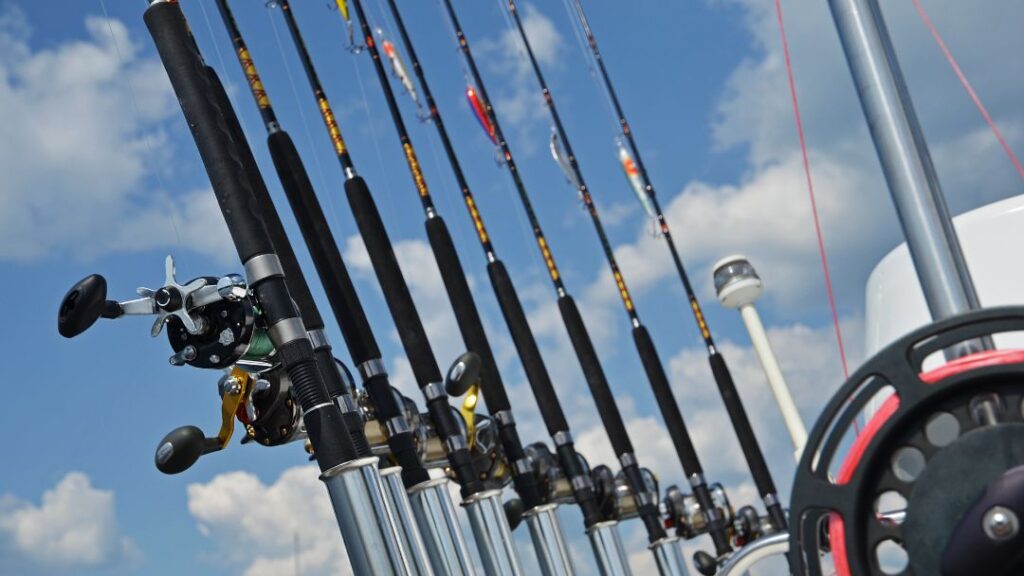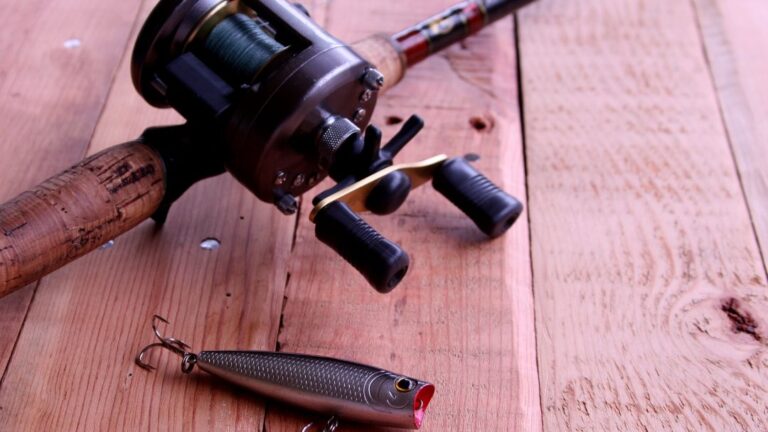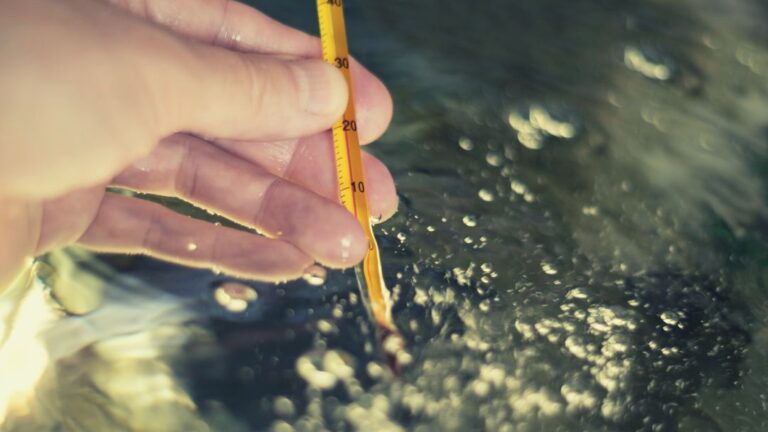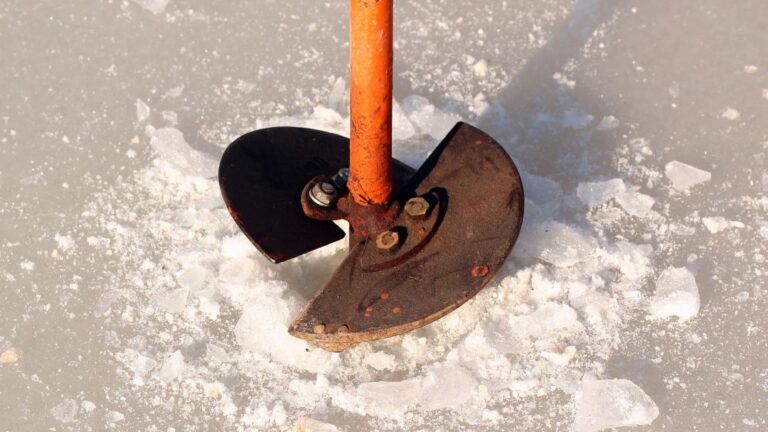Uses Of Different Fishing Rod Length And Action
You can’t overlook the importance of fishing rod length and its action when it comes to fishing. Having a proper length rod is necessary as it will affect your casting distance, preciseness, and hook-setting capabilities. A rod action will determine how effective your presentation will be.
Knowing the uses of different fishing rod lengths and actions is vital to increase your success on the water. Here, you will learn about various types of fishing rods in terms of length and action. Keep scrolling until we finish if you doubt choosing a particular fishing rod.
Does Fishing Rod Length Matter?
The distance between the tip and butt of a fishing rod is a measurement of its actual length.
Choosing an ideal length for a fishing rod is crucial, depending on your fishing requirements.
For example, shorter rods are better for shorter distances. They are less likely to bend and pull to retract the fish.
Shorter fishing rods are usually responded quickly and lighter than longer rods. You have more control in a closer range.
Fishermen don’t have to “high stick” or manipulate the fishing gear too much. Its sensitivity is impressive too.
On the other hand, longer fishing rods can cover a larger portion of water, allowing you to cast a greater distance. You will get more power and leverage when fishing in a more extended range.
Longer rods are highly flexible and carry more lines. They can move more lines faster than shorter fishing rods. So, it comes in handy, especially for hook-setting.

What Are Different Lengths Of Fishing Rods And Their Ideal Usage?
The length of a fishing rod can be anywhere from 4 to 15 feet.
Manufacturers produce various lengths of fishing rods to suit different fishing requirements.
You can categorize fishing rods into 5 sections in terms of their length.
01. Extra Short Rods
This type of fishing rod has a length between 4 to 5 feet.
They are an excellent choice for close-quarters fishing while fishing from the bank.
Extra short rods are perfect for quick follow-up casts. They are designed for handling light lines and lures.
You can use this gear to catch small fish species, such as trout, panfish, and other small game fish that do not weigh more than a few pounds.
This rod is well-suited for use on small rivers, streams, ponds, lakes, or any smaller bodies of water.
02. Short Rods
The average length of this fishing rod ranges between 5-6 feet. It is more manageable and maneuverable.
Short fishing rods are a perfect choice if you want to use a fishing rod, especially on dingy or dirty water and heavy cover.
They are a perfect choice for catching smaller game fish in short pitches. You won’t be wrong to expect better and more accurate casting.
This particular length fishing rod can show a reliable performance for catching on bass, perch, crappie, and walleye.
Fish weighing between 2 to 8 pounds are easy to catch with 5-6 feet rods. Anglers generally use them to catch small and medium-sized fish.
03. Medium Rods
Most new anglers start with medium rods. Their average length is 7 to 8 feet.
Medium-length fishing rods are the best choice for catching a wide range of fish species.
More importantly, you can utilize various fishing techniques, such as baitcasting, trolling, jigging, spinning, etc.
Anglers can use a 7-feet fishing rod for catching striped bass, flounder, snook, bluefish, redfish, and so on.
You won’t be wrong using it for freshwater fishing in lakes, rivers, and streams and saltwater fishing in inshore areas, bays, and harbors.
04. Long rods
The length of a long fishing rod ranges from 8 to 10 feet. They are a better choice for achieving longer lines from the water.
Fishermen can also aerialise and re-present their casts at a further distance easily. Keeping the leader of the rod outside of the guides more often appears simple.
You don’t have to step up to a Spey or switch rod, especially while fishing in big rivers. This kind of fishing rod can cover up to around 80 yards.
Anglers generally use longer rods for catching larger fish species, such as salmon, musky, steelhead, and catfish.
Fishermen often use 10 feet for bottom fishing due to its longer length that can reach close to the bottom area.
05. Extra Long Rods
This kind of fishing rod has a length between 10 to 15 feet. They are designed for surf fishing from the shore or pier.
You can maintain a good balance as you get angles to deal with fish and snags.
Fighting a big game or deep sea game fish without breaking a fishing line is what you love about extra-long fishing rods.
This longer and more powerful fishing rod can hold hundreds of yards of thick fishing lines.
Handling larger and stronger fish with a surf fishing rod is less hassle than shorter options. It improves the rod stroke ratio and decreases thrust loading on the piston.
You can use a long surf fishing rod for catching flounder, pompano, red drum or rockfish, spotted seatrout, mackerel, etc.
Does Fishing Rod Action Matter?
The action of a fishing rod refers to how much it twists, bends, or flexes under strain.
Fishing rod action plays a crucial role in fishing as it determines your casting ability, power, and responsiveness in various lures.
Fishermen use different techniques and presentations based on the fish species and water conditions.
A particular type of fishing action rod can heavily impact your overall fishing experience.
For instance, using a fly rod for flipping bass in heavy covers is not recommended. Once hooked, it is not easy to retrieve.
Likewise, a flipping stick with fast heavy action is unsuitable for casting dry flies to rise trout. Simply put, everything is designed for a particular purpose.
Heavy and faster action rods are more sensitive than lighter action. It will give you a more accurate feeling and keep your bait near the bottom.
What Are Different Actions Of Fishing Rods And Their Ideal Usage?
Fishing rods are available in various actions. They are designed to fit particular fishing techniques and fish species.
01. Slow Action Rod
Slow action rods are bendable 50% throughout their whole length or a third of the way down their blank. This makes them highly flexible.
Anglers generally use slow-action fishing rods to catch smaller fish species, such as panfish and trout. They can give a tough fight.
It acts as a shock absorber to prevent the hook from ripping through the mouth during hook sets.
Fishermen sometimes use them for ultra-light and fly-fishing applications. Its parabolic flex makes them well suited with light fishing lines.
02. Medium Or Moderate Action Rod
A medium-action fishing rod is bendable in the top half, around 30%.
Moderate-action options have a bit more backbone than slow-action fishing rods. Hence, it has better stiffness and strength in the lower section.
Besides, it has better sensitivity than slow action rods, allowing you to detect subtle bites and changes in the water conditions.
This kind of fishing gear is an excellent selection for lures with treble hooks or for spinnerbaits, buzz baits, and bladed jigs.
Moderate action fishing rod is pretty forgiving. It can absorb the energy of the cast, prevent the line from snapping or tangling, and protect light tippets from breaking when fighting fish.
Anglers can use medium action rods for spinnerbaits, chatter baits, and crankbaits as they have increased fighting ability.
03. Fast Action Rod
This kind of fishing rod is highly sensitive as it bends closer to the tip, around 25%.
The upper third of the total rod length will bend only. Fast-action rods have a stiff butt section and a flexible tip.
Anglers can use fast action rods for short, medium, and long casting distances.
It provides increased speed in the fly line. Fishermen can hold more lines during the cast.
Landing bigger and heavier fish with fast action rods is easygoing as it gives quick access to its powerful mid and lower sections.
Beginners prefer to use fast action rods as they can utilize a handful of different techniques. Also, it is easy to target various fish species.
Anglers can utilize this fishing gear for soft sticks, spinnerbaits, topwater, jerk baits, heavier lures, etc.
Also, fast-action rods are excellent for single hook lures in heavy or thicker covers, like timber or grass.
04. Extra-fast Action Rod
This kind of fishing rod deflects near the tip and is bendable only around 15% or one-fourth of the total rod length
Extra-fast action rods offer the maximum power and sensitivity. When a fish bites the lure, it will give you a more precise feel.
You can achieve a quick hookset with greater casting accuracy from its extra backbone support.
When fighting against bigger and stronger predators in deeper water, they are the best choice.
Manufacturers add extra-fast actions in topwater rods for greater accuracy and control to cast precisely.
Extra-fast action rods are pretty versatile for finesse techniques, like drop shotting or shaky head fishing.
Matching Rod Length And Action To Target Fish Species
Matching your fishing rod’s length and action to the target fish species is an essential consideration for any angler.
The right rod can make a big difference in your fishing success. It allows you to cast more accurately, detect bites more easily, and fight fish more effectively.
When targeting different fish species, you will want to consider both the length and action of the rod.
For example, when targeting smallmouth bass in clear water, you may want to use a longer, medium-power rod with fast action to make long casts and detect subtle bites.
When targeting largemouth bass in heavy cover, a shorter, heavier power rod with medium-fast action may be more suitable for flipping or pitching lures into tight spaces.
By matching your rod length and action to the target fish species, you can improve your chances of success and have a more enjoyable fishing experience.
Summing UP
The first fishing rod was invented 4,000 years ago, made from six-foot-long bamboo and a thin tapered flexible wood. But Horton of Bristol came with the first steel fishing rod on March 8, 1887. It has evolved a lot over these years.
Before choosing a particular length fishing rod, you must consider your fishing skills, water conditions, and other fishing equipment you will use. All these attributes will affect how much successful you will be in your fishing journey.







